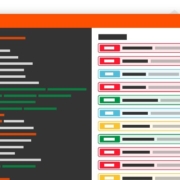 When analysts for professional sports teams noticed that marketing promotions that included the team’s logo vastly outperformed similar creative assets that featured player imagery — something which, to the casual observer, this may simply sound like good analyst work — it showed something significant: creatives rarely receive an analytical assessment of their work.
When analysts for professional sports teams noticed that marketing promotions that included the team’s logo vastly outperformed similar creative assets that featured player imagery — something which, to the casual observer, this may simply sound like good analyst work — it showed something significant: creatives rarely receive an analytical assessment of their work.
More than half of creatives say they rarely…get qualitative performance data about the creative content
Those analysts didn’t just stumble upon that insight. The feedback loop — where someone is dedicated to evaluating the creative used in marketing campaigns and feeding the data back to designers — was the result of a concentrated effort to improve the creative process, workflow and by extension, organizational culture.
More than half (55%) of creatives say they “rarely” or “never” get qualitative performance data about the creative content they’ve produced. Less than one-in-five creatives (17%) receive such feedback “always” or “often.” That’s according to our research, as published in the 2020 In-House Creative Management Report, which was conducted in partnership with InSource, a professional association for in-house creatives.
Two Approaches to Measuring Creative Value
The 2020 In-House Creative Management Report revealed that 89% of respondents think creative work is important to meeting business objectives. Similarly, 87% said their organization is giving them the same or more credit for the business results their work delivers for the organization.
How can a creative team improve what it does for a business if they never see how their work influences market behavior?
Those statistics are encouraging since creative teams have been asked to do more and more — with the same or fewer resources — for years. However, to sustain this positive relationship with marketing and business leaders, creative teams will need to find quantitative ways to demonstrate their value. The feedback loop strengthens the strategic relationship creatives have with their business leaders.
So how can creative value be measured? Efficiency and effectiveness are the two primary approaches.
Efficiency
Measures of efficiency center on output. Efficiency aims to quantify requests, project by volume, type, requestor, and per designer, completion times, cycle times, cause of delays, and rounds of revision.
Such measures are essential for making a case for the resources the creative team needs to get the work done. In our research, most in-house creative teams are at least thinking about output metrics. This is a good start but it’s just the beginning.
Effectiveness
Measures of creative effectiveness are the next level in organizational sophistication. The creative process doesn’t end when a project has been approved. Instead, there’s a feedback loop that still needs to be completed – performance metrics must be shared with the creative team. How can a creative team improve what it does for a business if they never see how their work influences market behavior?
Importantly, the benefits of sharing performance data goes beyond process improvement. It spreads to the overall culture which strengthens the partnership between creatives and marketing.
As Brent Chiu-Watson, a product leader at Adobe, wrote, measures of efficacy lead to a “mutual interest in understanding creative effectiveness.” In turn, cross-functional collaboration improves and the whole team begins “to provide better insight through dialogue.”
3 Ideas for Looping Measures of Effectiveness Back to Creative
When marketing organizations are interested in measuring creative, there is often more emphasis on measures of output than there is effectiveness. Sometimes, what gets measured is what’s easy to measure. There are several reasons for this:
- Creatives haven’t traditionally focused on metrics;
- The trend of bringing creative in-house has been driven by efficiency;
- Creatives don’t typically have access to performance metrics.
“There is an old adage that you can choose quality, speed or cost, but not all three. Sometimes two, but never all three,” says Adam Morgan, an executive creative director for Adobe, who contributed to the 2020 In-House Creative Management Report. “So, we say the most important thing is quality creative, but then we measure on speed and efficiency.”
Fortunately, Adam and several other big thinkers in the creative space offered some ideas for approaching this business problem.
1) Establish metrics and access in the beginning
“Two thoughts come to mind when you see creative teams not getting feedback on their work. First, does that data even exist? The marketing team might not be collecting it because they haven’t defined success metrics,” wrote Ilise Benun, a speaker, author and business coach for creative professionals at Marketing Mentor.
“Second, the marketing team has data, but they aren’t providing it. In that case, the creative team has to make it easy for the marketing team to pass that data over. Define what those metrics are at the beginning of the project, and then set up the project so that you can collect that information or have direct access to it at the end of the project.”
2) Pair creatives with analytics teams
“In general, teams that are earning their seat at the strategic table are probably also more connected to data. But I don’t think that the creative department should get swamped down in endless metrics,” says Adam.
“Use this as an opportunity to build a strategic partnership with even more departments within the organization who are already focused on measuring performance.”
3) Sharpen analytical skills of creatives
“It’s important to remember that operational metrics are key to showing the impact creative work has on the business,” says our very own Molly Clark, who heads our marketing team. “Creatives will strengthen their relationship with the business by becoming analytical creatives – the best combination of data-driven and creative.”
A Culture of Creative Feedback
The design team for the professional sports organization, at the beginning of this piece, were surprised by their analysts’ findings: most usually agreed that player imagery is visually more compelling. However, the organization built a feedback loop into the creative process that put combined analytics and creative to drive better business results.
Featured image via Unsplash.
Source

Source de l’article sur Webdesignerdepot




 When analysts for professional sports teams noticed that marketing promotions that included the team’s logo vastly outperformed similar creative assets that featured player imagery — something which, to the casual observer, this may simply sound like good analyst work — it showed something significant: creatives rarely receive an analytical assessment of their work.
When analysts for professional sports teams noticed that marketing promotions that included the team’s logo vastly outperformed similar creative assets that featured player imagery — something which, to the casual observer, this may simply sound like good analyst work — it showed something significant: creatives rarely receive an analytical assessment of their work.




 It’s no secret that having a custom domain name is an essential piece of any company’s branding strategy. While there are a myriad of hosting plans available that offer domains like your company.webhost.com, making the shift from one of those to simply yourcompany.com is an important step.
It’s no secret that having a custom domain name is an essential piece of any company’s branding strategy. While there are a myriad of hosting plans available that offer domains like your company.webhost.com, making the shift from one of those to simply yourcompany.com is an important step.
